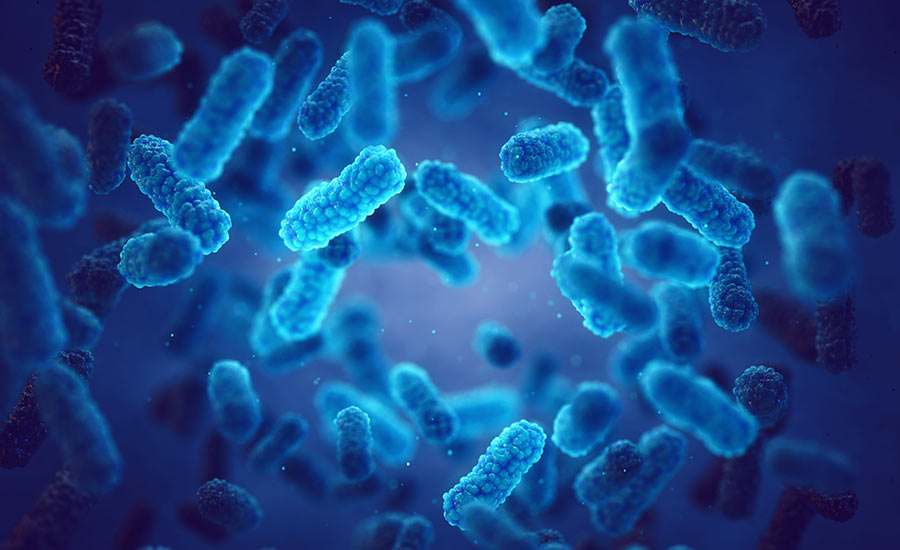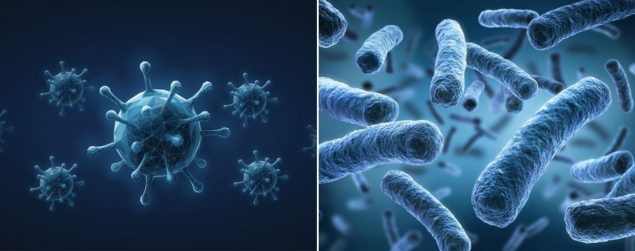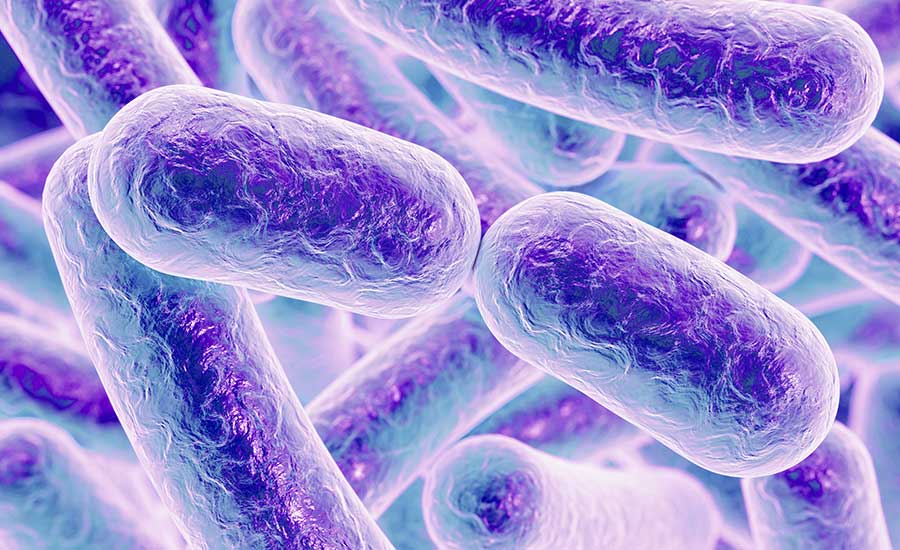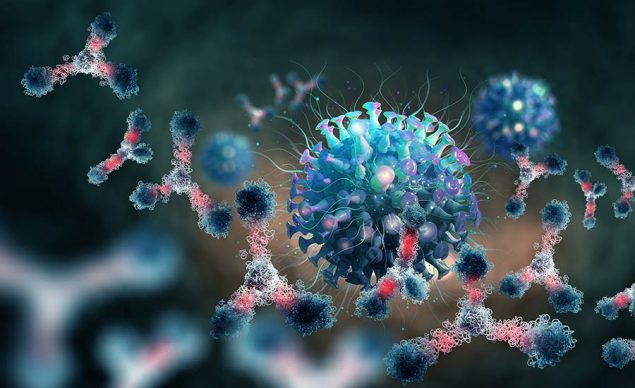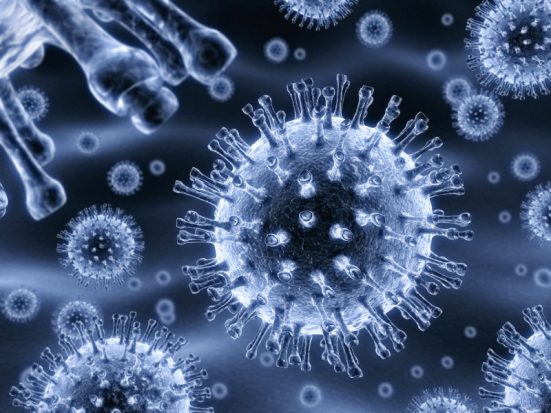Related Resources
Did you know that there are 39 trillion microbes in your body?
That’s an astonishing amount of microscopic creatures. But you might be wondering: what are microbes exactly?
In this article, we’ll find out what microbes are, including different types, where they live in the human body and if they’re heroes or villains.
Let’s get started!

What Are Microbes?
Microbes , also known as microorganisms, are tiny living organisms that are all around us — but you can’t see them.
In fact, they’re so small you have to use a microscope to view them!
The five main groups include bacteria, viruses, fungi, protozoa and archaea.
10 Fun Facts About Microbes
Before we dive deeper into the world of microbes, here are 10 fun facts worth knowing about these tiny organisms:
- 3.7 billion years ago, microbes first set their foot (more specifically, their flagellum) on Earth and evidence of their existence were found in rocks.
- Microbes aren’t picky eaters—they eat everything! This includes sunlight, sulfur, nitrogen, the nutrients in our bodies that we can’t break down and even their fellow microorganisms.
- Bacteria loves living rent-free in a person’s gut, making it their favorite spot
- Microbes produce at least 50% of the air we breathe
- Compared to dry hands, more bacteria can be found in wet hands since it thrives in damp environments.
- Forget cleaning your earwax on the daily. Earwax or cerumen has antimicrobial properties that reduce microbe build-up in the ears.
- Microbes can survive anywhere as long as sulfur is available
- Microbes can play both roles of good cop and bad cop. In fact, they can help us fight against infection by acting as a physical barrier. But ironically, microbes can also make you sick.
- Without microbes, cheese wouldn’t exist!

What Are The Types Of Microbes?
Now that you have a better understanding of what these miniature life forms are, it’s time to get up close and personal with the different types.
1. Bacteria
Bacteria is the first microbe known to exist. It was first observed by Antonie Van Leeuwenhoek, the father of microbiology in 1676.
And just like Raze , the wicked bacterium in the Biowars universe, bacteria is a prokaryote with one-celled microorganisms that don’t have a nucleus.
Bacteria can be found everywhere: in hot springs, oceans, soil, the Earth’s crust and most importantly, the human body.
While some bacteria can make us sick, the good news is that there are also the good guys who keep our digestive system clean by breaking down our food. We’ll dive deeper into that later!
Bacteria can be sub-categorized according to its shape into five groups:
- Cocci: spherical or round in shape
- Bacilli: rod-shaped
- Spirilla: spiral-shaped
- Vibrios: comma-shaped
- Spirochaetes: corkscrew-shaped
Examples of bacteria include Lactobacillus and Salmonella.

2. Viruses
Viruses are pesky organisms formed by genetic code of either DNA or RNA that is coated by protein.
These organisms were found by Dmitry Ivanovsky when he was studying a diseased tobacco plant in 1887.
Surprisingly, unlike bacteria, viruses aren’t cellular organisms. This makes them dependent on a host, which can include people, animals or plants.
Considered the smallest of all microbes, viruses range from 5 to 300 nanometers, compared to bacteria, which measure in 200 to 300 nanometers.
How small is that exactly? 500 million rhinoviruses, which cause the common cold, can fit into a pinhead!
Ebola virus and variola virus are some examples of viruses.
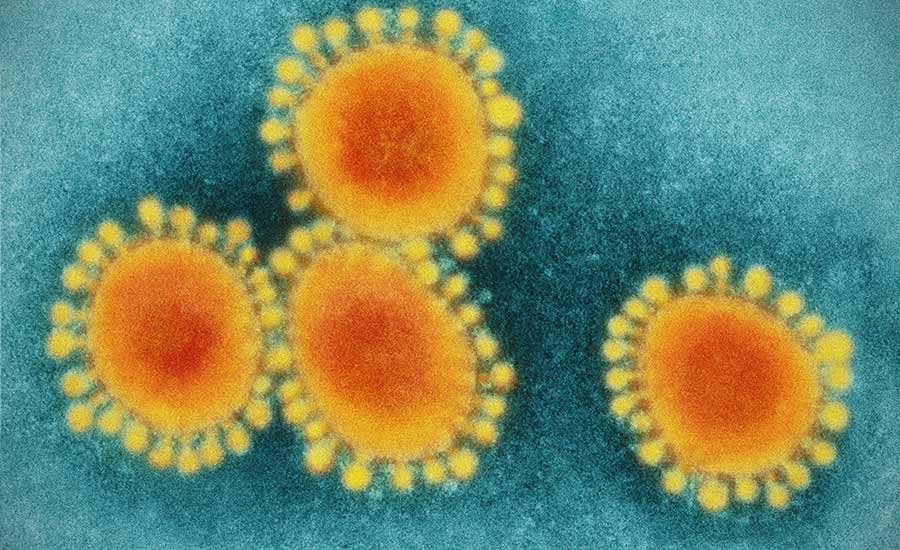
3. Fungi
Next on our list are fungi, multicellular (plant-like) organisms which were discovered by the father of mycology (study of fungi), Heinrich Anton de Bary in 1866.
A fungus is a special type of microbe. While fungi are considered plant-like since they share characteristics similar to plants with their root-like structures, they don’t produce their own food from the sun like plants do.
Instead, they get their food and nutrients from people or decaying plants and animals.
Fungi love to thrive in damp and warm places. But you can also find them in the air, soil, on plants and in you!
Examples of fungi include mushrooms and yeast.
4. Protozoa
Protozoa are single-celled eukaryotic organisms that have a nucleus, making them more complex in structure compared to their neighbors, archaea and bacteria.
Protozoa and bacteria share the same founder, Antonie Van Leeuwenhoek.
What makes protozoa interesting is that they can reproduce either sexually or asexually, by budding or fission.
Protozoa are mobile in nature, so expect to find them in most habitats, including freshwater, soil and even inside the human body.
Amoeba and Euglena are common examples of protozoa.
5. Archaea
Archaea are single-celled organisms that share characteristics with their fellow prokaryote, bacteria.
Like bacteria, archaea lack membrane-bound organelles and a nucleus.
However, they have characteristics that set them apart since bacteria has a lipid bilayer, while archaea have only one layer.
Archaea were discovered by scientists at the University of Illinois in 1977.
Apart from residing in our gut or skin, archaea are extremophiles or living organisms that can survive in extreme environments. They live in deep murky waters, salt deposits and even the Antarctic ice!
Some examples of archaea include Aeropyrum pernix and Metallosphaera sedula.
Why Are Microbes Important To The Environment?
Since we’ve discussed how these microscopic organisms play an important role in humans, it’s important to note how they can help the environment as well.
- Oxygen production: Blue-green algae or cyanobacteria perform photosynthesis by using water, carbon dioxide and sunshine. And when photosynthesis is conducted, oxygen is produced.
- Decomposition: Microbes play a crucial role in the ecosystem since they break down dead and decaying organisms, a process that is required for plants to grow and be healthy!
- Bioremediation: This is a process where microbes are used to reduce water and soil pollution by altering their environmental conditions.
Microbial Diversity In Different Environments
Microbes live everywhere, from boiling hydrothermal vents to the icy Arctic, showing how adaptable and important they are.
In soil, they recycle nutrients for plants, and in water, they support the food web by driving carbon and nitrogen cycles.
Their diversity makes them essential for life on Earth!
Where Do Microbes Live In The Human Body?
Wondering which parts of the human body microorganisms favor? Here are 10 places they love to hang out and live rent-free.
1. Gut
First on our list is the gut, a microbe’s favorite home!
But more than being a favorite community for microorganisms, the gut plays a crucial role in the first line of defense by creating a wall that blocks unwanted visitors and providing support to the immune system.
More on this later when we talk about microbes and our digestive system!
2. Mouth
Remember when we said that microbes love warm places?
Well, the mouth is the perfect playground for them! Our tongue, gums and teeth are also a plus since microbes can stick to them as well.
3. Skin
Before you blame your acne infections on Propionibacterium acnes, the skin bacteria that contributes to pimples, hear us out!
Not all microorganisms that thrive on the skin are troublesome. Some of them that dwell on skin produce molecules that form a physical barrier against the bad guys.
According to a 2018 study, Staphylococcus epidermis found on the skin can even protect skin from cancer.
4. Eyes
Thanks to your eyes being moist 24/7, it’s no surprise that the conjunctiva (the tissue inside the eyelid) and cornea (the transparent layer that protects the eye) are home to microbes.
A severe eye infection that can occur is endophthalmitis or infection inside the eye. This is caused by the Staphylococcus species or fungi Candida.
So the next time you apply your contact lenses, make sure you clean them first to prevent severe infections.
5. Nose
The nasal cavity is warm, damp and dark, so you can bet microbes love to live rent-free in there, too.
The good news is that a recent study found nasal microbiomes can help fight off allergies and even chronic sinus inflammation.
6. Ears
Aside from earwax, your middle ear is home to a diverse community of microorganisms that may cause ear inflammation and infections.
The intruders that can enter the middle ear include Haemophilus pneumoniae, Streptococci, Moraxella catarrhalis, and in rare occasions, the Mycobacterium.
They can get to your middle ear by travelling through the Eustachian tube (the pathway that connects the middle ear to the throat) and the nasopharynx, the upper part of the throat, just behind your nose.
7. Tonsils
Have you ever had a tonsil infection? If it wasn’t a virus that caused the infection, the bacteria Streptococcus pyogenes is most likely the culprit behind it.
But let’s look on the brighter side.
Tonsils have a cool method of fighting off a body infection, by trapping intruders that pass through your mouth or nose: they produce antibodies that prevent further harm with help from the good guys!
8. Lungs
If you think microbes can’t creep into your lungs, think again!
Thanks to the lungs’ coating that’s primarily designed to help transfer oxygen to the blood stream, microorganisms that reside in the lungs are fewer than those in your gut.
The top bacteria found in the lungs are Streptococcus that causes bacterial pneumonia and Prevotella that can cause respiratory infections such as pulmonary empyema.
9. Genitals
You can’t avoid it. Microbes aren’t spared from thriving in the genitals—and for a good reason!
They are essential in keeping the environment balanced to help prevent infections.
10. Belly Button
Surprise, surprise. The belly button is home to a jungle of microbes: 2,300 different kinds of bacteria to be exact!
But don’t worry — most of them are harmless.

Microbes And Your Digestive System
Among the many activities in our human body, digestion is one of the more complex processes that probiotics or good bacteria contribute greatly to.
Digestion is the process of turning the food you eat into nutrients.
It is a complex process of breaking down large, insoluble food molecules into smaller, water-soluble food molecules.
Without bacteria, digestion wouldn’t be possible!
Lactobacillus, the good kind of bacteria, does a great job of ensuring that the food we eat in the acidic walls of our intestines are digested properly.
When carbohydrates enter our intestines, Lactobacillus helps digest them.
Lactobacillus also helps digest sugar found in dairy products. And when the bacteria anaerobically respire, they produce lactic acid, which keeps the pH in our gut acidic.
Acid prevents bad bacteria or pathogens from surviving in our gut and ultimately helps prevent bacterial infections.
Lactobacillus also helps prevent an overgrowth of yeast in your gut, which can cause health issues, including an infection.
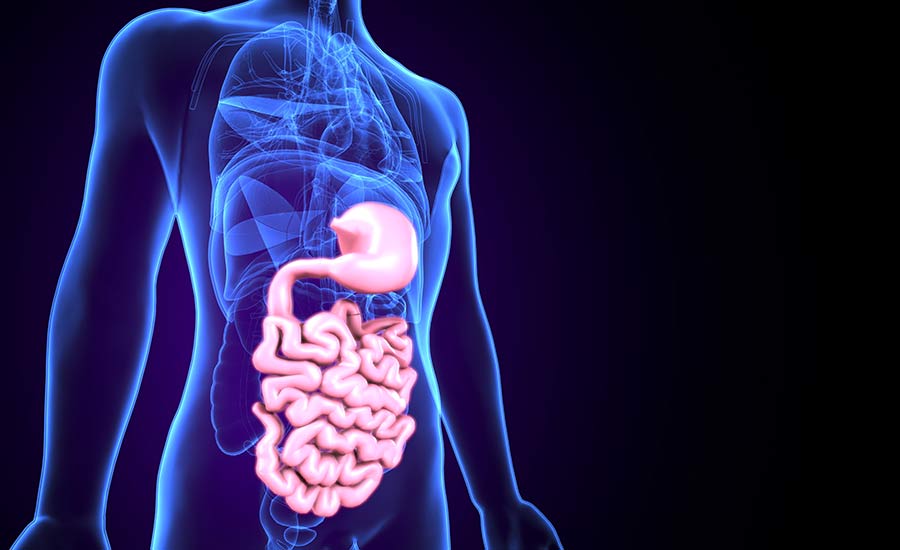
Microbes: The Good Guys vs. The Bad Guys
Have you ever been sick with the flu? If so, that was caused by a virus.
Microbes have a bit of a bad reputation, since diseases including pneumonia, meningitis and food poisoning are all caused by bad bacteria.
Harmful microbes cause many diseases, from the common cold to serious illnesses like tuberculosis and malaria.
Learning how they work helps create treatments and prevent infections. For instance, some bacteria release toxins that harm tissues, while viruses take over cells to reproduce and spread.
These tiny menaces are the reason why you have to wash your hands and clean your home — especially in high-risk areas such as the bathroom and kitchen, where microbes thrive.
But, the human body is a vault that keeps many surprising and interesting secrets.
Ultimately, not all bacteria are bad guys.
From helping you digest food and even cultivating foods such as cheese and bread to producing essential vitamins in the intestinal tract such as niacin, folic acid, and vitamins B12 and B6, good bacteria are essential to the human body.
What Are Microbes? Key Takeaways
Whether you treat microbes as your friend or archnemesis, we can’t deny that they are essential to human life.
From playing a vital role in digestion to making food we enjoy including cheese and bread, life wouldn’t be as we know it if these little creatures didn’t exist!
What Are Microbes FAQs
Microbes are tiny living organisms, like bacteria, viruses and fungi that are too small to see without a microscope. They live in places like soil, water, air and even inside the human body, helping with things like decomposition, fermentation and digestion.
Microbes have a big impact on our health. Helpful ones, like gut bacteria, aid digestion and support our immune system, while harmful ones can cause diseases. Keeping a balanced microbiome is key to staying healthy.
Yes, microbes are used in medicine to make antibiotics, vaccines and insulin. They’re also used in treatments like fecal transplants to restore healthy gut bacteria.
Microbes are integral to food production processes such as fermentation, which is used to make yogurt, cheese, bread and alcoholic beverages. They help develop flavors, textures and preserve food by inhibiting the growth of spoilage-causing organisms.
Environmental changes like pollution, climate change and habitat destruction can disrupt microbial communities. This can harm ecosystem functions and may lead to new diseases or the loss of helpful microbes.
Microbial resistance happens when microbes adapt to survive treatments like antibiotics, making infections harder to treat. This leads to longer illnesses, higher medical costs and more severe outcomes. Careful use of antimicrobials and continued research are vital to tackling this problem.

